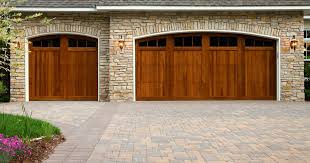Paver Driveways: The Ultimate Guide to Beauty, Durability, and Functionality

Introduction
Paver driveways are more than just a practical choice for vehicle access and parking; they offer aesthetic appeal, durability, and a customizable look that can enhance the curb appeal of any home. Unlike traditional asphalt or concrete driveways, paver driveways are made from individual units of concrete, brick, or natural stone, which are laid out in various patterns and designs. This versatility not only provides an attractive finish but also allows for easy repair and maintenance.
In this comprehensive guide, we will explore the benefits of paver driveways, the different types of pavers available, the installation process, maintenance tips, and considerations for choosing the right paver driveway for your home.
Benefits of Paver Driveways
1. Aesthetic Appeal
Paver driveways offer a wide range of design options, from classic brick to modern concrete and natural stone. This variety allows homeowners to create a driveway that complements their home’s architecture and landscape. With patterns such as herringbone, basketweave, and running bond, and colors ranging from earthy tones to vibrant hues, paver driveways can enhance the visual appeal of any property.
2. Durability and Longevity
Pavers are known for their durability. They can withstand heavy loads, resist cracking, and handle various weather conditions, including freeze-thaw cycles. Unlike concrete or asphalt driveways, which may develop cracks or surface issues over time, paver driveways are less prone to these problems due to their flexible nature.
3. Easy Repair and Replacement
One of the standout features of paver driveways is the ease of repair. If a section of your driveway becomes damaged, individual pavers can be removed and replaced without having to redo the entire surface. This targeted repair approach can save time and money compared to traditional driveways, which may require extensive work to fix localized issues.
4. Low Maintenance
Paver driveways generally require less maintenance compared to asphalt or concrete options. Regular sweeping and occasional washing are usually sufficient to keep the surface looking new. Additionally, pavers do not require sealing as often as concrete or asphalt, though sealing can enhance their appearance and extend their lifespan.
5. Eco-Friendly
Paver driveways can be more environmentally friendly than traditional options. Many pavers are made from recycled materials, and their permeable varieties allow water to drain through the surface, reducing runoff and promoting groundwater recharge. This permeability can help prevent erosion and reduce the risk of puddles and flooding.
Types of Pavers for Driveways
1. Concrete Pavers
Overview: Concrete pavers are a popular choice due to their affordability, durability, and versatility. They come in various shapes, sizes, and colors, allowing for a wide range of design options.
Benefits:
Cost-Effective: Generally less expensive than natural stone options.
Variety: Available in numerous shapes, sizes, and colors.
Durability: Resistant to cracking and heavy loads.
Considerations:
Color Fading: May fade over time due to exposure to sunlight.
Surface Texture: Can be smooth or textured, depending on preference.
2. Brick Pavers
Overview: Brick pavers offer a classic and timeless look. Made from fired clay, they provide a distinctive appearance and are highly durable.
Benefits:
Aesthetic Appeal: Provides a traditional and elegant look.
Durability: Resistant to wear and tear.
Color Retention: Less likely to fade compared to concrete pavers.
Considerations:
Cost: Typically more expensive than concrete pavers.
Limited Design Options: Fewer shapes and colors available compared to concrete.
3. Natural Stone Pavers
Overview: Natural stone pavers, such as granite, limestone, and slate, offer a luxurious and high-end appearance. Each stone type has unique colors, textures, and patterns.
Benefits:
Unique Look: Each stone is unique, providing a one-of-a-kind appearance.
Longevity: Extremely durable and long-lasting.
Natural Beauty: Enhances the aesthetic appeal with its natural variations.
Considerations:
Cost: Generally the most expensive option.
Maintenance: May require sealing to protect against stains and weathering.
4. Permeable Pavers
Overview: Permeable pavers are designed to allow water to flow through the surface, reducing runoff and promoting groundwater recharge.
Benefits:
Environmental Benefits: Reduces stormwater runoff and prevents erosion.
Drainage: Helps manage water drainage and reduces puddling.
Compliance: Can meet local regulations for stormwater management.
Considerations:
Maintenance: Requires regular cleaning to prevent clogging of the pores.
Cost: Can be more expensive than standard pavers.
Installation Process
1. Planning and Design
Before installation, it’s crucial to plan and design your paver driveway. Consider factors such as the size of the driveway, the type of pavers you want, and the pattern or design you prefer. Sketch out your design and measure the area to determine the amount of pavers needed.
2. Excavation
The first step in the installation process is to excavate the area where the driveway will be laid. Remove any existing surface material, such as grass or asphalt, and dig down to the required depth. This depth typically includes the paver thickness plus a base layer.
3. Base Preparation
A solid base is essential for a stable and long-lasting paver driveway. Lay a layer of gravel or crushed stone and compact it to create a stable foundation. The base layer helps with drainage and prevents shifting of the pavers.
4. Edge Restraints
Install edge restraints around the perimeter of the driveway to keep the pavers in place and prevent them from shifting. These restraints can be made from metal, plastic, or concrete.
5. Laying the Pavers
Begin laying the pavers according to your design pattern. Start from one corner and work your way across the area, ensuring that each paver is level and properly aligned. Use a rubber mallet to tap each paver into place.
6. Filling Joints
Once all the pavers are laid, spread joint sand over the surface and use a broom to sweep it into the gaps between the pavers. This helps stabilize the pavers and prevent them from shifting. Use a plate compactor to ensure the sand settles properly.
7. Cleaning and Sealing
Clean the surface of the pavers to remove any excess sand or debris. Consider applying a sealant to protect the pavers from stains and enhance their color. Sealing is optional but can extend the lifespan of the driveway and improve its appearance.
Maintenance Tips
1. Regular Cleaning
Keep your paver driveway clean by sweeping away leaves, debris, and dirt. Use a mild detergent and a pressure washer to remove stains and dirt buildup. Avoid using harsh chemicals that could damage the pavers.
2. Sealant Application
If you’ve applied a sealant, follow the manufacturer’s recommendations for reapplication. Sealing helps protect the pavers from stains, weathering, and UV damage.
3. Repairing Damage
If individual pavers become damaged or cracked, remove and replace them as needed. This targeted repair approach helps maintain the integrity and appearance of the driveway.
4. Weed Control
Weeds can grow between the pavers, especially if the joint sand is not properly filled. Use a weed killer or remove weeds manually to prevent them from affecting the driveway’s appearance.
Choosing the Right Paver Driveway for Your Home
Selecting the right paver driveway involves considering several factors:
1. Budget
Determine your budget for the paver driveway, including materials, installation, and maintenance costs. Natural stone pavers are typically more expensive than concrete or brick options, so choose materials that fit within your budget.
2. Design Preferences
Consider the design and style that best complements your home’s architecture and landscaping. Choose paver colors, patterns, and textures that enhance the overall aesthetic appeal.
3. Climate and Weather Conditions
Choose pavers that can withstand local weather conditions. For areas with extreme temperatures or heavy rainfall, opt for durable and weather-resistant materials.
4. Functionality
Consider the functional requirements of your driveway. If you need to manage water runoff or prevent erosion, consider permeable pavers. For high-traffic areas, choose durable and low-maintenance options.
5. Professional Installation
While DIY installation is possible, hiring a professional installer can ensure that the driveway is laid correctly and adheres to local building codes. Professionals have the expertise and tools to handle the installation process efficiently.
Conclusion
Paver driveways offer a blend of beauty, durability, and functionality, making them an excellent choice for enhancing the curb appeal of any home. With various types of pavers available, each offering unique benefits and aesthetic qualities, homeowners can create a driveway that suits their style and practical needs.
The installation process involves careful planning, base preparation, and precise laying of pavers. Regular maintenance, including cleaning and occasional sealing, helps keep the driveway looking its best and ensures its longevity.
By considering factors such as budget, design preferences, and local climate, homeowners can choose the right paver driveway that meets their needs and enhances the overall appearance of their property. With the right pavers and proper installation, your driveway can be a lasting investment that adds value and charm to your home.









